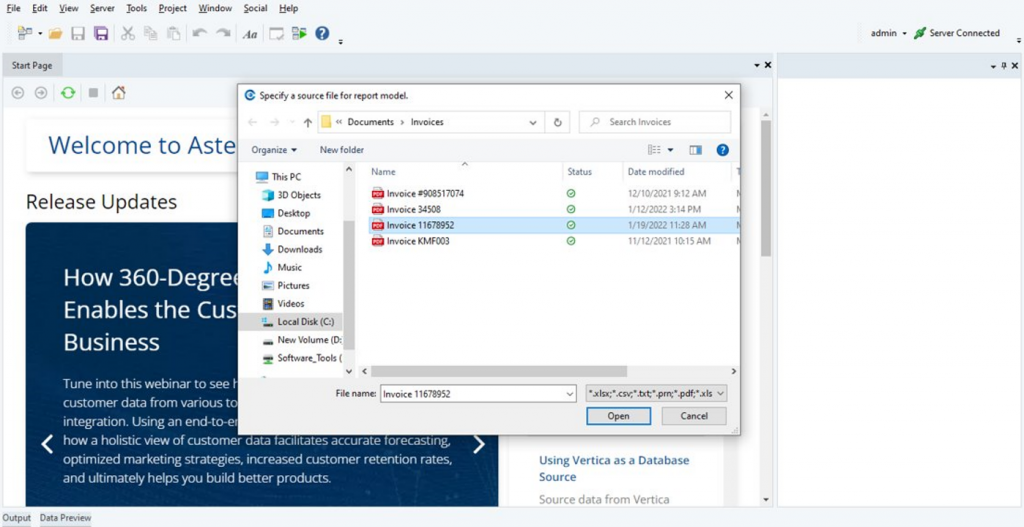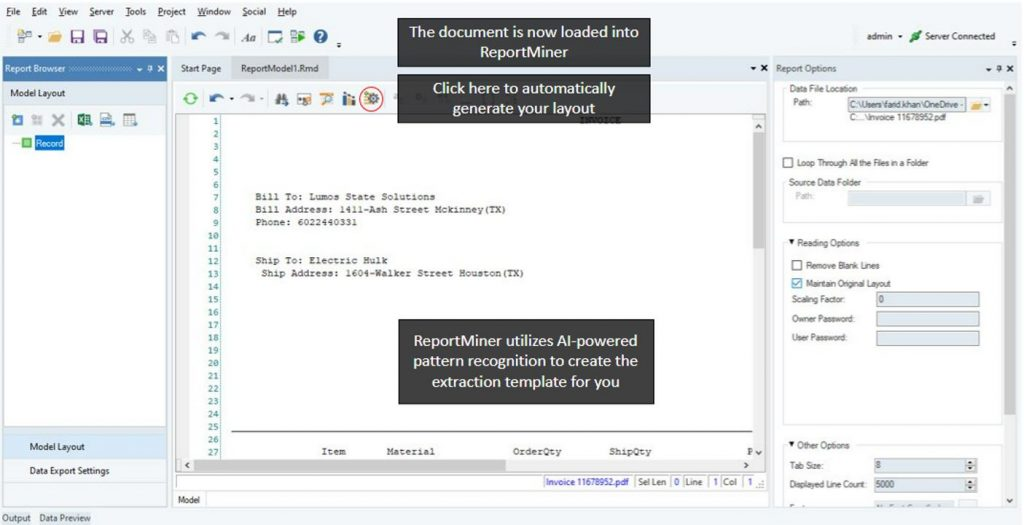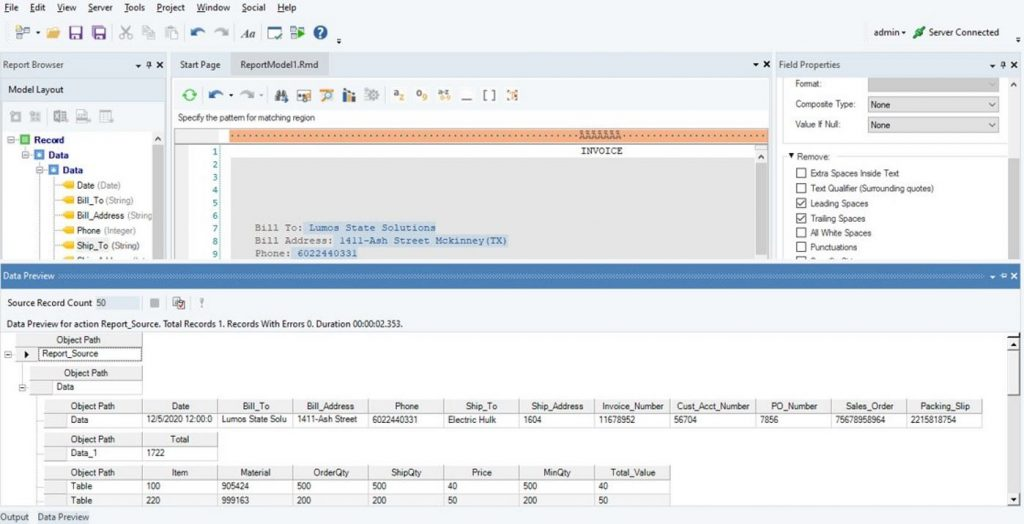
AI-Based Data Extraction in Clinical Trials with Astera ReportMiner
Data is the backbone of clinical trials, and accurate and timely data extraction in clinical trials is crucial for making informed decisions about patient care and treatment. However, extracting data from clinical trial documents can be a time-consuming and error-prone process. With the growing volume of data generated in clinical trials, traditional methods of data extraction are becoming increasingly inefficient and impractical. This is where AI-based data extraction comes in.
AI-based data extraction uses artificial intelligence algorithms to automatically extract data from unstructured documents. AI-based data extraction is particularly useful in clinical trials, where large volumes of data are generated and analyzed. The right data extraction solution can help you achieve accurate and speedy results, which are critical for patient care and research outcomes.
In this blog post, we will explore the role of AI-based data extraction in clinical trials. We will examine the benefits of AI-based data extraction, the challenges it addresses, and the potential for future development. In the end, we will have a look at ReportMiner in action.
AI-Based Data Extraction in Clinical Trials
AI-based data extraction has numerous use cases in clinical trials. One of the primary use cases is in the extraction of data from clinical trial documents, such as electronic case report forms (eCRFs), clinical study reports (CSRs), and adverse event reports. AI-based data extraction can also be used to extract data from other sources, such as electronic health records (EHRs), medical imaging, and genomics data.
AI-based data extraction offers several advantages over traditional data extraction methods. First and foremost, AI-based data extraction can automate the extraction process, which reduces the need for manual data entry and saves time and resources. This results in faster data processing and analysis, which can lead to quicker and more accurate decisions about patient care and treatment.
Second, AI-based data extraction can improve the accuracy of data extraction. This minimizes the risk of errors and ensures that data is accurate and reliable.
Third, AI-based data extraction can handle large volumes of data quickly and efficiently. With the growing volume of data generated in clinical trials, traditional methods of data extraction are becoming increasingly impractical. AI-based data extraction can handle large amounts of data in a fraction of the time it would take a human to do the same task, which frees up valuable time for clinical trial practitioners to focus on other aspects of the trial.
Astera ReportMiner for Clinical Trial Data Extraction
Astera ReportMiner uses AI-based technology to automate the extraction of data from clinical trial documents.
ReportMiner uses a combination of machine learning and template-based methods to extract data from unstructured documents, such as CSRs, and convert it into structured data that can be easily analyzed and visualized. ReportMiner also includes a visual data mapping tool that allows users to easily define data fields and extract data from multiple sources.
One of the key advantages of ReportMiner is its ability to handle large volumes of data quickly and efficiently. This is particularly important in clinical trials, where large amounts of data are generated and analyzed on a regular basis. With ReportMiner, clinical trial practitioners can extract data from multiple sources and analyze it in real-time, which can lead to faster and more accurate decisions about patient care and treatment.
ReportMiner also includes advanced data validation and cleansing features, which help to ensure the accuracy and reliability of extracted data. This is particularly important in clinical trials, where data accuracy is critical for patient safety and research outcomes.
Overall, Astera ReportMiner is a powerful tool for clinical trial data extraction and analysis. By automating the extraction of data from complex clinical trial documents, ReportMiner can help clinical trial practitioners save time and resources, while improving the accuracy and reliability of extracted data. With its advanced features and user-friendly interface, ReportMiner is a valuable tool for any organization involved in clinical research.
Astera ReportMiner in Action
Using our automated, code-free platform, you can intuitively build pattern-based extraction templates to extract complex data.
Our solution’s new AI-driven data extraction capabilities have made things easier than ever. AI Capture allows you to automate document processing with ease. See how you can use the feature down below:
- Specify a file source for a report model. For illustration, let’s select a sample PDF document.

- Click the Auto-Generate Layout button at the top bar. It will extract data from different data regions in the document. You can easily add a formula field, delete regions, and modify the data fields captured by AI Capture.

- Finally, preview the data converted into a structured format and load it to your preferred destination.

It’s that simple! Leveraging Astera ReportMiner’s AI Capture technology, you can extract data from vital PDF documents in a matter of seconds. Moreover, the job scheduling feature will make the process more efficient by making sure that data is extracted on a periodic basis.
 Astera AI Agent Builder Coming Soon
Astera AI Agent Builder Coming Soon



